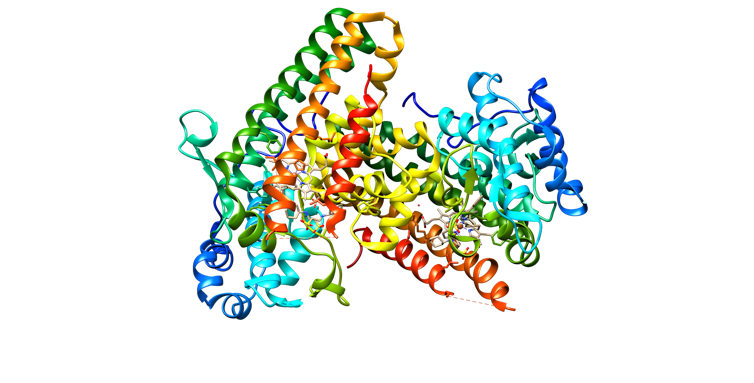Growing older is a organic course of that nobody can keep away from. Ideally, rising outdated needs to be a time to loosen up and benefit from the fruits of your labor. Growing older additionally has a darker aspect, nonetheless, typically linked to illness.
Each second, your cells carry out billions of biochemical reactions that gas important features for all times, forming a extremely interconnected metabolic community. This community permits cells to develop, proliferate and restore themselves, and its disruption can drive the ageing course of.
However does ageing trigger metabolic decline, or does metabolic disruption speed up ageing? Or each?
To handle this chicken-or-egg query, you first want to grasp how metabolic processes break down throughout ageing and illness.
I’m a scientist and researcher, and my lab focuses on exploring the advanced relationship between metabolism, stress and ageing. In the end, we hope this work will present methods to advertise more healthy ageing and extra vibrant lives.
Hyperlink between metabolism and ageing
Growing older is essentially the most vital threat issue for a lot of of society’s commonest illnesses, together with diabetes, most cancers, heart problems and neurodegenerative issues.
A key issue behind the onset of those well being points is the disruption of mobile and metabolic homeostasis, or steadiness.
Disrupting homeostasis destabilizes the physique’s inner surroundings, resulting in imbalances that may set off a cascade of well being points, together with metabolic issues, continual illnesses and impaired mobile features that contribute to ageing and different severe circumstances.
Disrupted metabolism is linked to many hallmarks of ageing cells, reminiscent of telomere shortening, which is harm to the protecting ends of chromosomes, and genomic instability, the tendency to type genetic mutations.
frameborder=”0″ permit=”accelerometer; autoplay; clipboard-write; encrypted-media; gyroscope; picture-in-picture; web-share” referrerpolicy=”strict-origin-when-cross-origin” allowfullscreen>
A dysfunctional metabolism can also be linked to poorly functioning mitochondria; mobile senescence, or when cells cease dividing; imbalances in intestine microbes; and cells’ diminished means to detect and reply to totally different vitamins.
Neurological issues, reminiscent of Alzheimer’s illness, are prime examples of age-related circumstances with a powerful hyperlink between dysregulated metabolism and purposeful decline.
For instance, my analysis staff beforehand found that in ageing mice, the flexibility of bone marrow cells to produce, retailer and use vitality is suppressed as a consequence of elevated exercise from a protein that modulates irritation.
This energy-deficient state results in a rise in irritation that is worsened by these ageing cells’ reliance on glucose as their essential gas supply.
Experimentally inhibiting this protein within the bone marrow cells of ageing mice, nonetheless, revitalizes the cells’ means to provide vitality, reduces irritation and improves plasticity of an space of the mind concerned in reminiscence.
This discovering means that some cognitive ageing may very well be reversed by reprogramming the glucose metabolism of bone marrow cells to revive immune features.
Repurposing medicine to deal with Alzheimer’s
In our newly revealed analysis, my staff and I found a brand new connection between disrupted glucose metabolism and neurodegenerative illness. This led us to establish a drug initially designed for most cancers that might doubtlessly be used to deal with Alzheimer’s.
We targeted on an enzyme referred to as IDO1 that performs a essential position in step one of breaking down amino acid tryptophan.
This pathway produces a key compound referred to as kynurenine, which fuels extra vitality pathways and inflammatory responses. Nonetheless, extreme kynurenine can have detrimental results, together with growing the chance of growing Alzheimer’s.

We discovered that inhibiting IDO1 can recuperate reminiscence and mind operate in a spread of preclinical fashions, together with in cell cultures and mice. To grasp why, we regarded on the metabolism of mind cells.
The mind is without doubt one of the most glucose-dependent tissues within the physique. An lack of ability to correctly use glucose to gas essential mind processes can result in metabolic and cognitive decline.
Excessive ranges of IDO1 scale back glucose metabolism by producing extra kynurenine. So IDO1 inhibitors – initially designed to deal with cancers reminiscent of melanoma, leukemia and breast most cancers – may very well be repurposed to cut back kynurenine and enhance mind operate.
Utilizing a spread of lab fashions, together with mice and cells from Alzheimer’s sufferers, we additionally discovered that IDO1 inhibitors can restore glucose metabolism in mind cells.
Moreover, we have been in a position to restore glucose metabolism in mice with each amyloid and tau accumulation – irregular proteins concerned in lots of neurodegenerative issues – by blocking IDO1. We imagine repurposing these inhibitors may very well be useful throughout varied neurodegenerative issues.
Selling more healthy cognitive ageing
The consequences of neurological issues and metabolic decline weigh closely on people, households and the financial system.
Whereas many scientists have targeted on concentrating on the downstream results of those illnesses, reminiscent of managing signs and slowing development, treating these illnesses earlier can enhance cognition with ageing.
Our findings counsel that concentrating on metabolism has the potential to not solely gradual neurological decline but additionally to reverse the development of neurodegenerative illnesses reminiscent of Alzheimer’s, Parkinson’s and dementia.
Discovering new insights on the intersection of stress, metabolism and ageing can pave the best way for more healthy ageing. Extra analysis can enhance our understanding of how metabolism impacts stress responses and mobile steadiness all through life.![]()
Melanie R. McReynolds, Assistant Professor of Biochemistry, Penn State
This text is republished from The Dialog underneath a Inventive Commons license. Learn the unique article.



